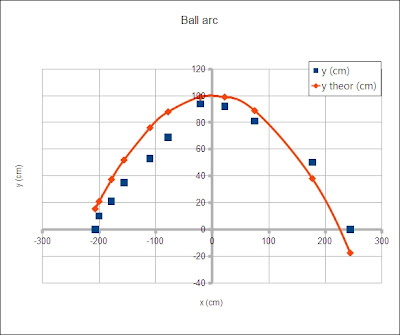Acceleration of gravity

Laboratory 032 involves timing the fall of a ball to determine the acceleration of gravity g. The students drop a small superball from heights of 100 to 300 centimeters inside the classroom. Sylvia holds a super ball while Caroline and Tracy Ann steady the meter sticks. Irene looks on. Laboratory 032 now builds on two earlier activities that during a regular school usually occur on Monday and Wednesday respectively. The first activity was a plot of time versus distance for an accelerating RipStik . Angie holds the meter sticks, Brilinda drops and times. The students graphed the time versus the distance for the RipStik and found a non-linear relationship (curved line) between time and distance for the accelerating RipStik. Jermis holds the tape measure as Fritzgerald releases the super ball . In the second activity, the arc of a ball , the students explored whether the trajectory of a ball might be related to a parabola. A quadratic equation was presented as the unde...











